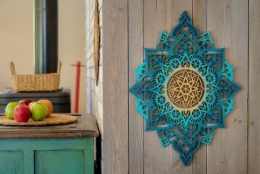Whether you’re managing a gym, sports complex, indoor tennis court, or martial arts dojo, air conditioning isn’t just about comfort—it’s about performance, health, and safety. Athletes train harder, stay safer, and recover faster when the indoor environment is controlled and optimized. That’s where indoor sports air conditioners step in as a crucial investment.
This guide breaks down how these specialized cooling systems are designed for high-activity environments and what features you should prioritize to get the best value and performance.
What Makes an Indoor Sports Air Conditioner Different?
Unlike standard residential or office ACs, sports air conditioners are engineered to handle large open spaces, high occupancy rates, and increased heat loads due to physical exertion. Here’s what sets them apart:
| Feature | Indoor Sports AC | Regular AC |
|---|---|---|
| Cooling Capacity | High (large BTU rating) | Moderate (for small enclosed rooms) |
| Air Circulation | Enhanced air throw and directional vents | Standard airflow |
| Humidity Control | Advanced moisture removal | Basic dehumidification |
| Air Quality | HEPA & carbon filters, anti-odor tech | Basic dust filters |
| Durability | Industrial-grade motors & components | Residential-grade parts |
| Installation Type | Wall-mounted, ceiling-suspended, ducted | Wall/window units, split systems |
Benefits of Indoor Sports Air Conditioning Systems
🌀 1. Improved Athletic Performance
-
Athletes perform better in environments kept between 20°C to 23°C with relative humidity around 50%.
-
Optimal airflow helps reduce muscle fatigue and dehydration.
💨 2. Superior Air Quality
-
High-performance filters trap allergens, sweat odors, and airborne particles.
-
Reduces respiratory problems among athletes and visitors.
💧 3. Moisture and Odor Management
-
Sweating is inevitable in sports. These ACs help manage humidity buildup, avoiding slippery surfaces and bacteria growth.
-
Built-in odor neutralizers maintain a fresh-smelling environment.
⚙️ 4. Energy Efficiency for Large Spaces
-
Many models come with inverter technology and smart thermostats to manage energy costs while delivering high performance.
👷 5. Durability Under High Usage
-
Designed for daily use in challenging environments. Can run for long hours without overheating or reduced output.
Key Considerations Before You Buy
Before choosing an indoor sports air conditioning unit, consider the following:
✅ 1. Room Size & Ceiling Height
-
Use this BTU reference for basic sizing:
| Area (sq. ft) | BTU Requirement |
|---|---|
| 1,000 – 1,500 | 30,000 – 45,000 |
| 1,500 – 3,000 | 50,000 – 75,000 |
| 3,000+ | 80,000+ (multiple units) |
✅ 2. Air Circulation System
-
Opt for multi-directional vents and turbo blowers for even air distribution across courts or gym floors.
✅ 3. Noise Level
-
Look for units rated under 60 dB to maintain a peaceful environment for yoga studios or training centers.
✅ 4. Filter System
-
HEPA, activated carbon, and ionizers should be standard for athlete-heavy environments.
✅ 5. Maintenance & Accessibility
-
Systems with easy-access panels, washable filters, and built-in diagnostics reduce long-term maintenance costs.
Top Use Cases for Sports-Specific AC Systems
🏀 Basketball Gyms
-
Handle high ceilings and intense motion, requiring strong airflow to prevent hot zones.
🧘 Yoga Studios
-
Quiet operation, precise temperature control, and clean air are essential.
🏋️ Weight Rooms & CrossFit Boxes
-
Need rapid cooling and humidity control, especially in poorly ventilated areas.
🥋 Martial Arts Studios
-
Require anti-odor features and high filtration to handle sweat, mats, and gear.
Real Data: How Air Conditioning Affects Performance
Several studies and observations show:
-
Cognitive decline begins at 28°C in athletes—reflexes and focus deteriorate.
-
VO2 max output drops by up to 15% in poorly ventilated environments.
-
Cooling during rest intervals in indoor sports reduces injury risk by up to 30%.
These figures emphasize the importance of maintaining stable and cool indoor air, especially during tournaments or intense training sessions.
FAQs: Indoor Sports Air Conditioner
Q1: Can I use a regular commercial air conditioner in a sports facility?
A: Not recommended. Standard ACs lack the airflow power, durability, and filtration systems needed for sports environments.
Q2: How do I calculate the AC capacity for my indoor court?
A: Multiply your area in square feet by 20–25 BTUs. Factor in ceiling height, number of occupants, and heat-generating equipment.
Q3: What’s the best air conditioning type for an indoor gym?
A: Ducted inverter systems or ceiling-suspended industrial split units provide balanced cooling and efficient operation.
Q4: Do these systems help with bad odors in gyms?
A: Yes. Units with activated carbon filters and UV sterilization remove odors caused by sweat and bacteria.
Q5: How often should filters be cleaned or replaced?
A: Monthly for reusable filters, and every 3–6 months for replaceable filters, depending on usage.
Q6: Are these units eco-friendly?
A: Many models now use R32 refrigerant, which is low in GWP (Global Warming Potential), and have energy-saving certifications.
Key Features Checklist
Before you finalize your purchase, make sure your indoor sports air conditioner includes:
-
BTU output suitable for space size
-
Multi-speed fan with directional airflow
-
HEPA or carbon air filters
-
Humidity and odor control
-
Smart control (WiFi/app/remote)
-
Energy efficiency rating (EER/SEER)
-
Quiet operation (<60 dB)
-
Durable body (anti-corrosion, heavy use ready)







